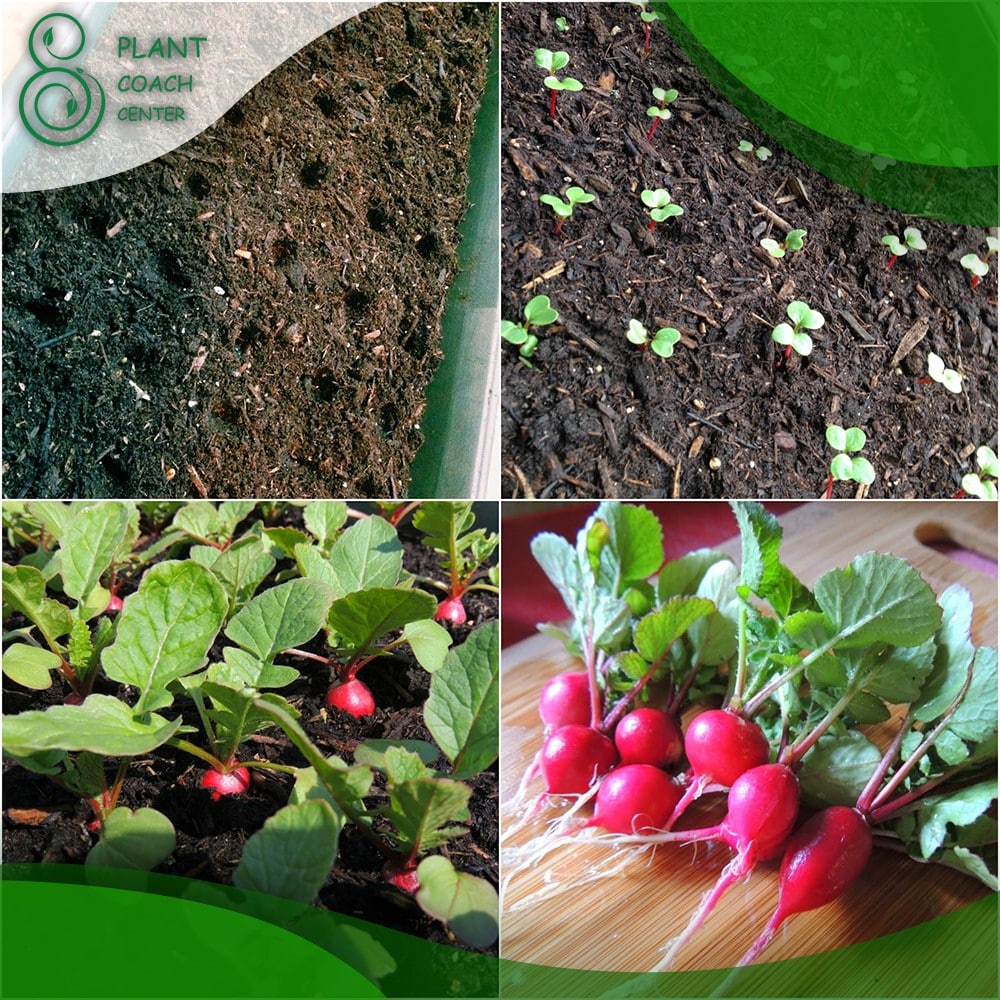When to Grow Radishes
Welcome to the vibrant world of radish cultivation, where timing is the key that unlocks a treasure trove of crisp, vibrant roots. As the seasons dance their eternal ballet, gardeners ponder the age-old question: When is the perfect time to sow radish seeds and witness their transformation into those delectable, peppery delights? Whether you’re a seasoned gardener or just embarking on your green-fingered journey, mastering the art of timing in radish cultivation is fascinating.
Beyond the clock’s mundane ticking, the Earth’s natural rhythms and the interplay of weather, soil, and daylight hours all conspire to influence the ideal planting window. In this exploration, we’ll journey through the intricate tapestry of factors shaping how radish grows. From uncovering the nuances of soil preparation to embracing the diversity of radish varieties, get ready to unravel the chronicles of cultivation timeframes and embark on a flavorful adventure that spans seasons and stretches the limits of your garden’s bounty.
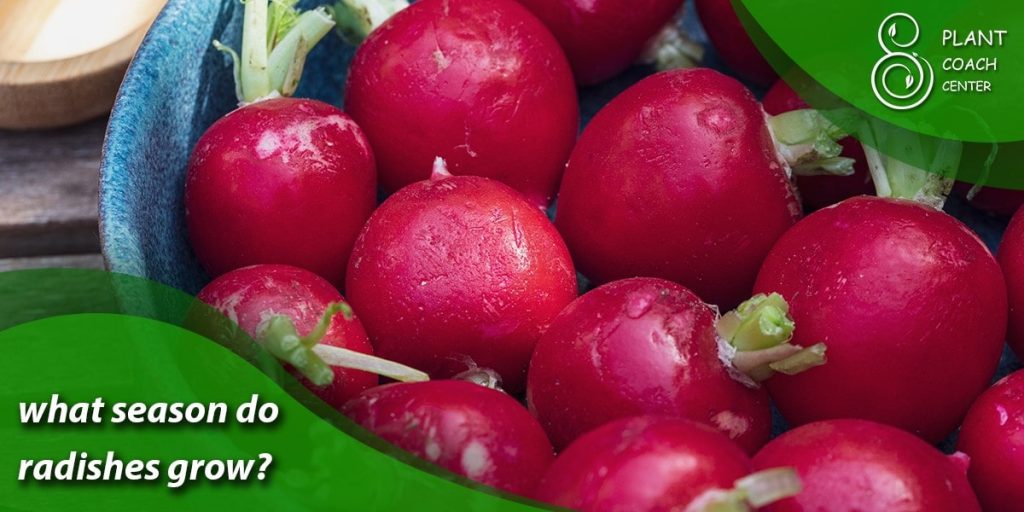
Seasonal Delight: Exploring the Best Seasons for Radish Planting
Radishes, those crisp and zesty jewels of the garden, have a distinct preference regarding the seasons in which they thrive. Each season brings its own set of conditions that can either boost or hinder radish growth. Let’s journey through the seasons and uncover the best times to sow radish seeds.
Spring Sprouts: A Cool Kickstart
Spring is the star of the radish planting show, offering the perfect conditions for these quick-growing root vegetables. As the Earth awakens from winter slumber, the soil temperature becomes just right for radish seeds to germinate swiftly.
The cool air and moist soil encourage speedy growth, and within a few weeks, you’ll be crunching into your first homegrown radishes. The bonus? Spring radishes are often characterized by their tender flesh and mild flavor, making them an ideal addition to salads and snacks.
Summer Strategy: Beating the Heat
As summer heat intensifies, radish cultivation becomes a bit trickier. However, by strategically choosing radish varieties that can handle warmer temperatures and provide consistent moisture, you can enjoy fresh radishes throughout the summer. Opt for heat-resistant cultivars and consider partial shading to prevent the soil from becoming too hot, which can cause radishes to become pithy and less palatable.
Fall Feasting: A Second Spring
As the dog days of summer give way to the crisp embrace of fall, radishes get another chance to shine. Fall is often considered the second-best season for radish planting. The cooler temperatures of early fall mimic those of spring, promoting optimal growth. Additionally, the diminishing insect pressure and reduced competition from other crops make fall an excellent time to sow radish seeds for a late-season harvest.
Winter Wonders: Mild Climates Rejoice
Radishes can often be grown in mild winter climates, even during the coldest months. You can extend your radish harvest into the winter with proper protection like row covers or cold frames. However, monitoring the soil temperature and ensuring it stays below freezing is crucial, as this can lead to stunted growth and poor-quality roots.
Unlocking the Soil Secrets: Soil Preparation and Radish Planting Times
At the heart of successful radish cultivation lies the canvas upon which these roots paint their vibrant hues – the soil. Before embarking on your radish planting journey, it’s essential to understand the intricate dance between soil preparation and planting times, a partnership that can make or break your harvest.
Soil Symphony: Setting the Stage
Preparing the soil for radish planting is akin to orchestrating a symphony. Radishes prefer well-draining soil that’s rich in organic matter. Begin by loosening the soil to a depth of at least 6 inches, allowing roots to penetrate quickly and preventing the risk of stunted growth. Work in compost or well-rotted manure to boost the soil’s fertility and structure, ensuring your radishes have access to the nutrients they need to thrive.
Timing the Prelude: Temperature Matters
As you prepare the soil, keep a keen eye on temperature cues. Radish seeds have a distinct preference for cooler soil temperatures, typically between 45°F and 75°F (7°C to 24°C). Planting radishes too early in cold soil can lead to slow germination while planting in overly warm soil can result in poor root development. Utilize a soil thermometer to gauge the temperature and time your planting accordingly.
Spring Soil Serenade: A Cool Invitation
During the spring season, as the soil starts to warm after the cold of winter, it’s essential to choose the right moment to sow radish seeds. Aim for soil temperatures around 50°F to 65°F (10°C to 18°C) for optimal germination and rapid growth. This sweet spot ensures your radishes establish themselves quickly and produce tender, flavorful roots.
Fall Frolic: A Refreshing Enigma
Fall planting presents its own unique challenges and opportunities. The soil, absorbing summer’s warmth, remains inviting to radish seeds well into the season. However, keep in mind that the days are gradually growing shorter, which can affect the pace of growth. Aim to plant radishes in late summer, allowing enough time to mature before the first frost arrives.
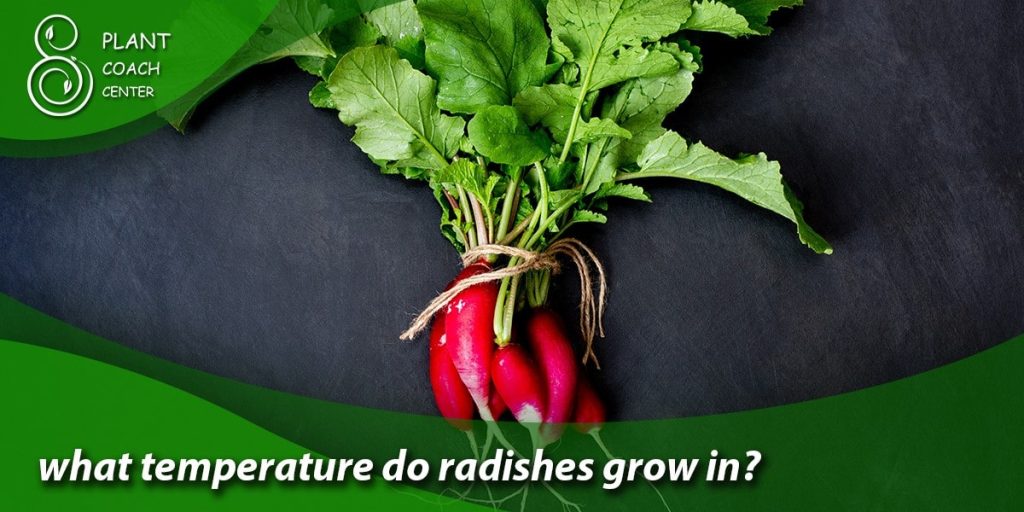
Timing Matters: Sowing Radish Seeds Indoors vs. Direct Sowing
In radish cultivation, the question of when to sow seeds often extends to where to sow them – indoors or directly in the garden soil. Each approach has benefits and considerations, allowing gardeners to tailor their planting strategy to their unique circumstances.
Indoor Intrigue: Jumpstarting the Growing Season
Sowing radish seeds indoors can be a game-changer for regions with short growing seasons or unpredictable weather. Starting seeds indoors a few weeks before the last frost date gives you a head start on the growing season.
This method lets you carefully control the germination environment, ensuring optimal soil temperature and moisture levels. Once they’ve developed a few true leaves, transplanting seedlings to the garden can also provide protection against early spring cold snaps.
Direct Delight: Embracing Simplicity
Direct sowing of radish seeds is the classic approach that nature herself has employed for centuries. This method eliminates the need for transplanting, as seeds are planted directly into the garden soil, where they’ll grow to maturity. It’s a straightforward, low-maintenance option, especially suited for gardeners with longer growing seasons and mild climates. As the soil naturally warms in spring, it signals the perfect time for radish seeds to germinate and thrive.
Microclimate Matters: Adapting Your Approach
When deciding between indoor and direct sowing, consider your local microclimate. Cooler regions might benefit from indoor starts, giving plants a safe and warm beginning. Conversely, warmer areas might find direct sowing more effective due to their extended growing seasons. Remember that radishes are quick growers, and their preference for cooler temperatures makes them well-suited for direct sowing in early spring or late summer.
Transplanting Tricks: Aiming for Success
Proper transplanting techniques are critical to a seamless transition for those who opt for indoor sowing. Harden off your seedlings gradually by exposing them to outdoor conditions over a week before planting them in the garden. This helps them acclimate to temperature and light fluctuations, reducing the shock of transplanting.
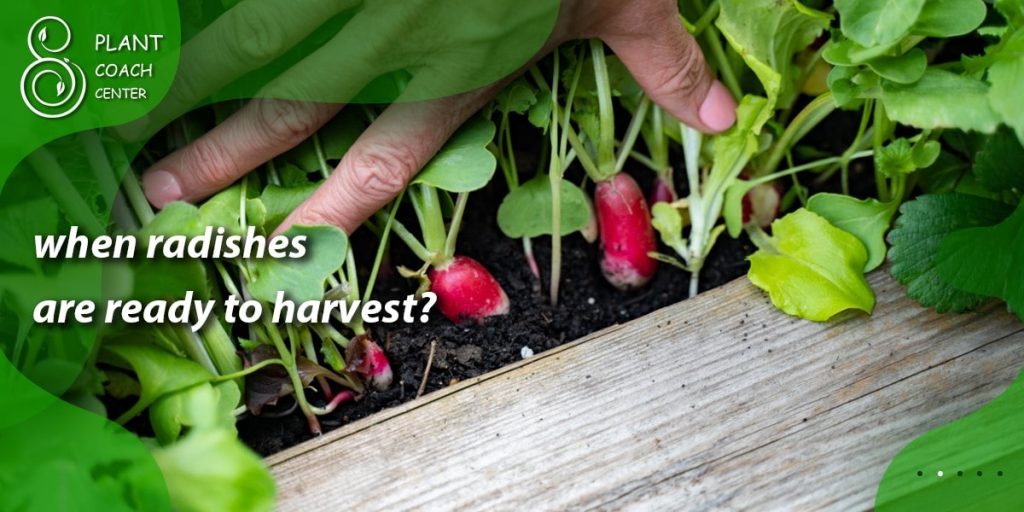
Nurturing Growth: How Day Length Affects Radish Planting Schedule
As the sun rises and sets, casting its ever-changing glow on your garden, a subtle dance of day length unfolds, guiding the growth of your radish plants. The interplay between daylight hours and the biological clock of radishes is a phenomenon that keen gardeners can harness to optimize their planting schedule and enhance the quality of their harvest.
Photoperiod and Plant Behavior
Day length, or photoperiod, significantly impacts the growth and development of radish plants. Like many plants, radishes possess a biological sensitivity to changes in day length. As days lengthen, radishes shift their focus from leafy growth to root development. Understanding your local day-length patterns is valuable for determining when to plant your radish seeds.
Spring Equinox: A Signaling Moment
The spring equinox, when day and night are nearly equal in length, serves as a pivotal moment for radish planting. Around this time, the increase in daylight hours signals to radish plants that it’s time to invest energy into root growth. Planting radish seeds a few weeks before the equinox ensures that they take advantage of this transition, allowing for robust root formation.
Fall Equinox: Sowing for Optimal Flavor
The fall equinox presents another intriguing opportunity. As days shorten, radish plants naturally divert their energy back into producing leaves and stems. Planting radishes a few weeks before the fall equinox can lead to flavorful, tender radishes with a delightful balance between root and leaf development.
Light Manipulation: Extending the Growing Season
Artificial lighting can be employed to manipulate day length for gardeners in regions with unpredictable weather or shorter growing seasons. By providing supplemental light to extend the daylight hours, you can encourage radish plants to grow optimally even as natural daylight decreases. This technique is beneficial for fall planting when daylight hours naturally wane.
Embracing the Natural Rhythm
While manipulating day length can offer advantages, embracing the natural rhythm of daylight is equally rewarding. Radishes are innately attuned to the changing seasons, and their growth patterns align with the Earth’s cycles. By following the cues of changing day length, you connect with the essence of the garden and foster a harmonious relationship between plant and environment.
Radish Varieties and Their Unique Timelines: A Planting Calendar
Just as the world is painted with diverse cultures and landscapes, the realm of radishes is adorned with various varieties, each with its own personality and preferred planting timeline. Crafting a radish planting calendar that accommodates these distinctive preferences allows you to explore a tapestry of flavors, colors, and textures throughout the growing season.
Classic Reds: Early Spring Delights
Traditional round red radishes are often the stars of early spring gardens. These zesty roots thrive in cooler temperatures and can be sown as soon as the soil is workable. With a growing time of about 20 to 30 days, they provide a quick and satisfying harvest that marks the start of the gardening season.
Winter Wonders: Long Season Varieties
Elongated varieties, such as daikon radishes, capture attention with their elongated forms and mild, slightly sweet flavor. These radishes require a longer growing season, often around 50 to 70 days. Plant them in late spring or early summer for a fall harvest, and let them develop their character as they bask in the warmth of the growing season.
Radiant Rainbows: Mixed Variety Magic
Mixed radish seed packets offer various colors, shapes, and sizes. These varieties, from vibrant reds to creamy whites and purples, add visual interest to your garden and table. Timing varies based on the included varieties, so consult individual seed packets or guides to determine the optimal planting windows.
Sparkling Winter Jewels: Late-Season Pleasures
For those eager to extend the radish harvest into winter, watermelon radishes, and other winter varieties come to the rescue. These radishes are sown in mid to late summer, taking advantage of the warm days to establish roots. As temperatures cool down, their vibrant colors intensify, culminating in a colorful and nutritious winter treat.
Time-Tested Tricks: Succession Planting
Creating a radish planting calendar isn’t limited to a single planting session. Employ the art of succession planting to extend your harvest window. Begin with early spring varieties, followed by mid-season options, and conclude with fall and winter selections. This strategy ensures a continuous supply of fresh radishes throughout the year.
Microclimates and Regional Considerations: Adapting Radish Planting Times
In the intricate tapestry of gardening, microclimates add a layer of complexity that can transform your gardening experience. As you embark on your radish planting journey, understanding the nuances of your specific microclimate and considering regional factors becomes essential for a thriving harvest. Let’s delve into microclimates and how they influence radish planting times.
Unveiling Microclimates: Gardens Within Gardens
Microclimates are small-scale variations in temperature, humidity, and other environmental factors within a larger area. They often emerge due to local topography, structures, vegetation, and sunlight exposure. A single garden can harbor multiple microclimates, ranging from sun-soaked corners to sheltered pockets, each with unique characteristics.
Coastal Comfort: Mild Temperatures, Extended Seasons
Coastal regions typically enjoy milder temperatures due to the moderating influence of nearby bodies of water. This maritime effect gradually transitions between seasons, allowing for extended radish planting opportunities. Coastal gardeners can often sow radish seeds earlier in spring and later into fall, capitalizing on the comfortable climate.
Mountain Magic: Cooling Altitudes
Mountainous areas bring cooler temperatures and shorter growing seasons. In such regions, it’s crucial to time radish planting by the frost-free window. Utilize cold-hardy radish varieties and consider starting seeds indoors or employing season-extending techniques to maximize growth during the limited warmth.
Urban Oases: Heat Islands and Microclimates
Urban environments often harbor “heat islands,” where concrete and buildings absorb and radiate heat, creating localized warmth. These pockets of elevated temperatures can encourage earlier planting but also require careful monitoring to prevent premature bolting. Additionally, city gardens may have microclimates due to shading from tall structures or wind channels between buildings.
Arid Allure: Desert Challenges and Opportunities
In arid regions, water availability becomes a critical consideration. Radishes prefer consistent moisture, so careful irrigation planning is necessary. Plant radish seeds during cooler periods to mitigate heat stress, and consider mulching to retain soil moisture and regulate temperature.
Latitude Lessons: Day Length Variations
Day-length variations become more pronounced as you move closer to the poles. Northern gardeners experience longer daylight hours during summer, potentially accelerating radish growth. Conversely, southern gardeners in high latitudes might find extended daylight hours beneficial for fall planting.
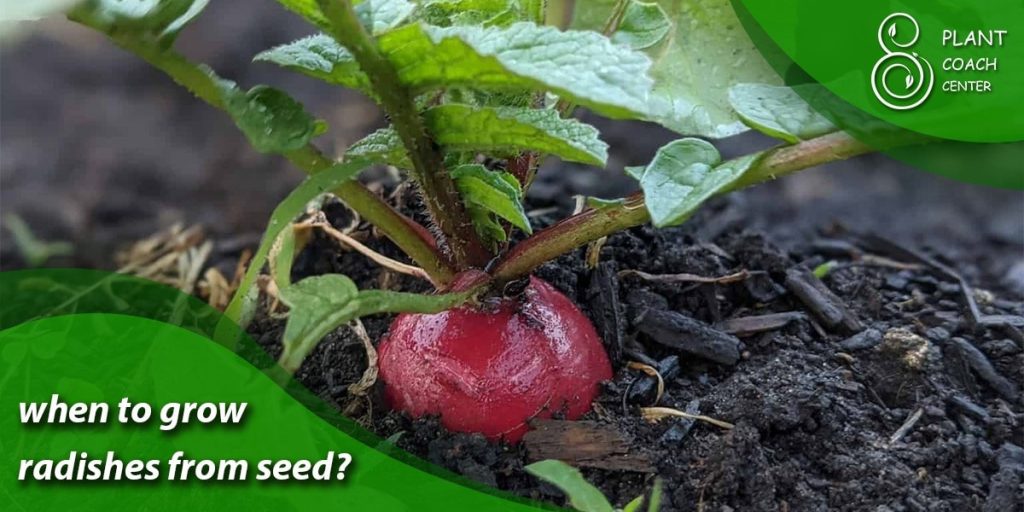
Extending the Harvest: Succession Planting and Prolonged Radish Enjoyment
In the enchanting world of radish cultivation, the journey doesn’t need a fixed endpoint. By embracing the concept of succession planting, you can extend the delight of crisp, flavorful radishes throughout the growing season, savoring their vibrant presence in your garden and on your plate.
Art of Timing: Staggered Sowing for Abundance
Succession planting involves sowing radish seeds regularly, ensuring a continuous supply of fresh roots. Rather than planting a large batch all at once, you’ll strategically sow smaller batches every few weeks. This technique aims to exploit the rapid growth of radishes, maintaining a consistent harvest over an extended period.
Savoring Seasons: Adapting to Changing Conditions
The beauty of succession planting lies in its adaptability to shifting conditions. You can adjust your planting schedule accordingly as the weather transitions from excellent to warm or vice versa. This adaptability allows you to make the most of optimal growing conditions and circumvent challenging weather periods.
Early to Late: Mastering Timing for Maximum Yield
Begin your succession planting with early spring radishes, enjoying their brisk crunch as the gardening season starts. As the weather warms, transition to mid-season varieties and explore heat-resistant options to endure summer heat. As fall approaches, introduce late-season radishes, ensuring a colorful and flavorful finale to your radish-growing journey.
Key to Continuity: Observing Growth Phases
The key to successful succession planting lies in observing the growth phases of your radishes. As your first batch nears maturity, prepare the soil for the next sowing. As the mature radishes are harvested, the next batch will be ready to fill the gap, seamlessly continuing the cycle of growth and harvest.
The Flavor of Patience: Delayed Gratification
Embracing succession planting calls for patience, as not all radishes will be ready for your table immediately. However, the anticipation is part of the pleasure as you watch each batch progress from seed to vibrant roots. The reward comes in the form of an extended harvest that tantalizes your taste buds throughout the season.
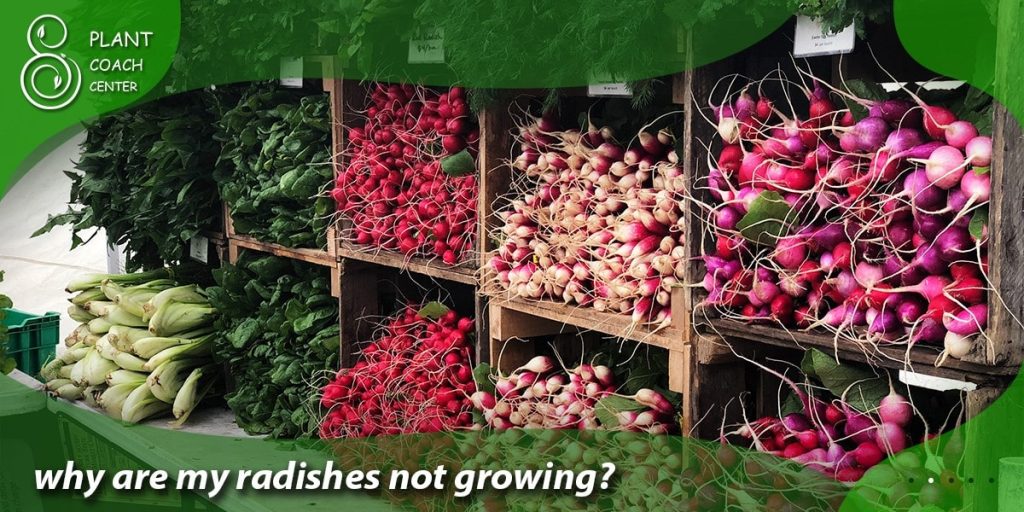
Conclusion
In the intricate tapestry of radish cultivation, timing emerges as an art that intertwines with nature’s rhythm. From the cool embrace of spring to the vibrant summer days and the bittersweet farewell of fall, each season beckons us to sow our radish seeds with intention.
We unlock a world of possibilities by understanding the nuances of soil preparation, exploring diverse planting methods, and embracing the dance of day length and microclimates. As we extend our journey through succession planting, our gardens become living reflections of adaptation and continuity.
For further guidance on this captivating horticultural voyage, turn to the wealth of resources at plantcouchcenter.com. Here, the wisdom of seasoned gardeners converges, offering a haven for all who seek to master the intricate dance between time, nature, and the ever-enchanting radish.
When is the best time to plant radishes?
Early spring and late summer are ideal for radish planting.
Can I grow radishes in the winter?
Yes, you can extend radish cultivation into the winter months with protection.
What radish varieties thrive in hot climates?
Heat-resistant radishes like 'French Breakfast' and 'Summer Cross' perform well in warm regions.


